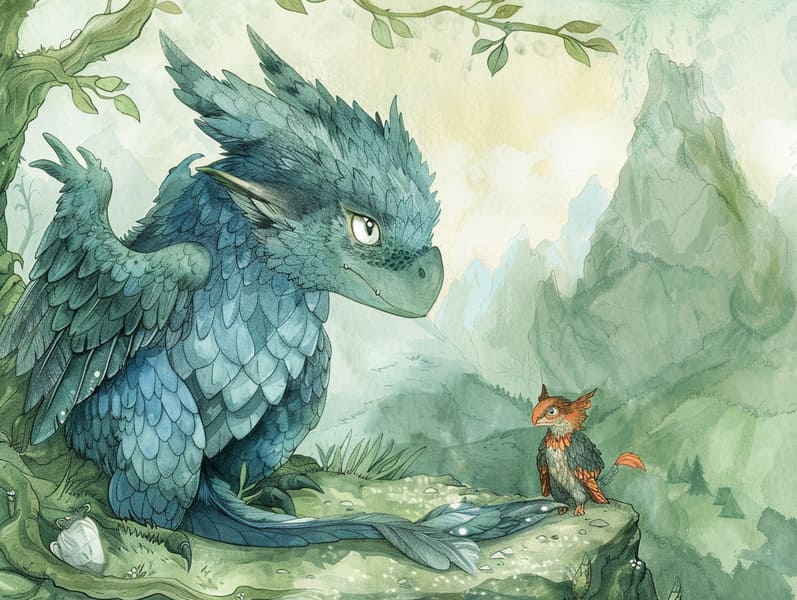The Emergence of Fairy Tales to Read and Its Lasting Spell.
The Emergence of Fairy Tales to Read and Its Lasting Spell.
Blog Article

Short fairy tales have long histories. These stories have been narrated from one generation to the next millennia before they were ever recorded. They emerged from a variety of civilizations, including Eastern traditions. They were initially narrated among grown-ups, often carrying themes and messages concerning the societal norms and beliefs of the time.
The renowned Brothers Grimm, Jacob and Wilhelm, were among the first to compile and publish many of these beloved fairy tales. Their anthology, "Grimm's Fables," included classics like "The Little Glass Slipper," "The Story of Hansel and Gretel," and "Schneewittchen," which have since become hallmarks in the world of iconic fairy tales. Similarly, Hans Andersen's enchanting fairy tales, such as "The Mermaid's Tale," and "The Duckling that Could," have captivated hearts worldwide, establishing their place in the pantheon of beloved fairy tales.
Though they are centuries old, classic fairy tales remain as important as ever, especially as kids' bedtime tales. These whimsical stories are now available in different formats, including richly illustrated books, captivating animations, and digital fairy tales.
Their ongoing significance can be connected to several fascinating points:
Key Lessons: Classic fairy tales often illustrate important moral lessons. Stories like "The Tale of the Boy Who Cried Wolf" teach the significance of truthfulness, while "The Tale of the Tortoise and the Hare" highlight the traits of determination and unassuming nature. These narratives offer kids clear distinctions between virtue and vice, helping to shape their moral compass in a gentle yet impactful way.
Empathy and Awareness: Traditional fairy tales frequently showcase individuals facing obstacles and hardships, stimulating audiences to empathize with their struggles and encourage their triumphs. For instance, "The Tale of Beauty and the Beast" conveys the merit of appreciating inner worth to know the inner spirit of a soul, fostering understanding and understanding.
Cultural Recognition: Many traditional fairy tales are imbued with the cultural contexts from which they were born. Delving into these fairy tales can provide informative snapshots into different traditions, cultivating a sense of world respect and knowledge.
Imagination and Creativity: The imaginative elements in ancient fairy tales—wizardry and magic—awaken children’s creative dreams. These stories carry readers to otherworldly realms, provoking creative dreams and a sense of marvel that endures a lifetime.
Ancient fairy tales are not only entrancing but also teaching. They act as fascinating tools in enhancing various brain and heart skills in young ones. When old fairy tales are spoken out loud, they cultivate verbal development by bringing new language and complex sentence structures. This practice also fosters hearing abilities and concentration, as kids hang on every word, enthusiastic to see what happens next.
Furthermore, deliberating the themes and characters of old fairy tales can sharpen problem-solving abilities and logical thinking. The young are taught to see patterns, guess what will happen, and get cause and effect. These contemplations also benefit kids articulate their thoughts and feelings, adding to their emotional intelligence.
In today’s information age, the proliferation of web-based fairy tales has made these stories more within reach than ever. Digital sites and web apps feature wide arrays of old fairy tales that can be viewed or listened to anytime, anywhere. Fairy tales read aloud are particularly well-liked, giving an immersive method for kids to engage with these alluring stories. Narrated books and spoken videos carry characters and settings to life, often accompanied by spellbinding audio effects and tunes that amplify the narrative adventure.
The persistent attraction of classic fairy tales lies in their ability to adjust to modern society while retaining their main lessons. Contemporary revisions of these tales often show more different characters and modern settings, making them familiar to today’s audience. However, the core values of valor, goodness, and fair play remain unchanged, continuing to resonate with children of all ages.
Traditional fairy tales also offer a sense of reassurance and recognition. They bequeath a well-arranged narrative with a obvious beginning, middle, and end, often closing with the wrap-up of conflicts and the triumph of virtue over corruption. This certainty can be placating for children, bringing a sense of steadfastness in an ever-changing world.
Traditional fairy tales continue to charm and instruct new generations, maintaining their beauty and applicability in modern society. As children's night stories, they feature a perfect blend of charm and understanding, promoting moral values, empathy, and creativity. The abundance of digital storybooks and the sought after status of fairy tales narrated confirm that these old fairy tales remain reachable to new generations.
By preserving and telling these narratives, we continue to recognize the rich tapestry of tradition and cultural heritage. Whether you are viewing a richly illustrated book, viewing a web-based library, or listening to an audio story, the majesty of ancient fairy tales is always within reach. These stories emphasize of the eternal strength of storytelling and its ability to bind us across generations and cultures.
Be it you are accessing a click here vibrantly illustrated book, exploring a cyber library, or listening to an audiobook, the magic of bedtime fairy tales is always within reach.
These fairy tales point out of the everlasting ability of narratives and its ability to unite us across generations and cultures, making a tie that captivates and teaches alike.